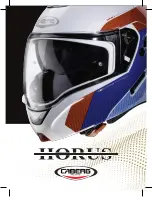
27
Chapter 3: Helmet Maintenance
2. Inspect the edgeroll for loose edges or damage such as cuts, tears, or holes.
NOTE:
Advise the aircrew member not to set the helmet on the canopy edge, boarding
ladders, or pylons to prevent damage to the leather edgeroll.
3. Check the helmet for loose screws.
4. Ensure that the visors are free of cracks, scratches, dust, and smears. (Minor scratches
that do not interfere with vision are acceptable.)
NOTE:
Wipe the visor with a chamois or clean, non-scratching cloth. You may moisten
the cloth with a 70% isopropyl alcohol/water mix to remove oil or grease smears from the
visor.
5. Ensure that the visor is securely attached to the helmet.
6.
Ensure that the visor fits the helmet snugly, with enough resistance to require pulling the
visor away from the helmet to raise or lower it.
7. Ensure that the headset components are securely attached and are working properly. You
can perform checkout by plugging the mask microphone cable into the MQ-1/MQ1A tester,
DMH-1 tester, or another tester while the mask microphone is connected to the helmet
headset. Speak into the microphone. The microphone and earphones are working when
the voice is transmitted through the amplifier and is heard through the headset.
8. Ensure that the energy-absorbing liner is securely attached to the helmet and is free of
holes or damage.
9.
Ensure that the TPL or XLiner is securely attached, properly fitted, and free of holes and
cracks.
10. Check the general condition of all attaching hardware.
3-2 4 Periodic Inspection
Aircrew members are responsible for ensuring that their helmets have been inspected, cleaned,
and repaired as necessary by certified Life Support Technicians within 30 days before each
flight. Helmets used without oxygen masks shall be inspected within 90 days before each flight.
Helmets used only with the aircrew chemical defense ensemble shall be inspected every 180
days before each flight. Inspections shall be annotated on an appropriate form as a record of
inspection and maintenance. A piece of pressure-sensitive tape may be attached to the helmet/
oxygen mask to record inspection dates.
(Continued on next page)
















































